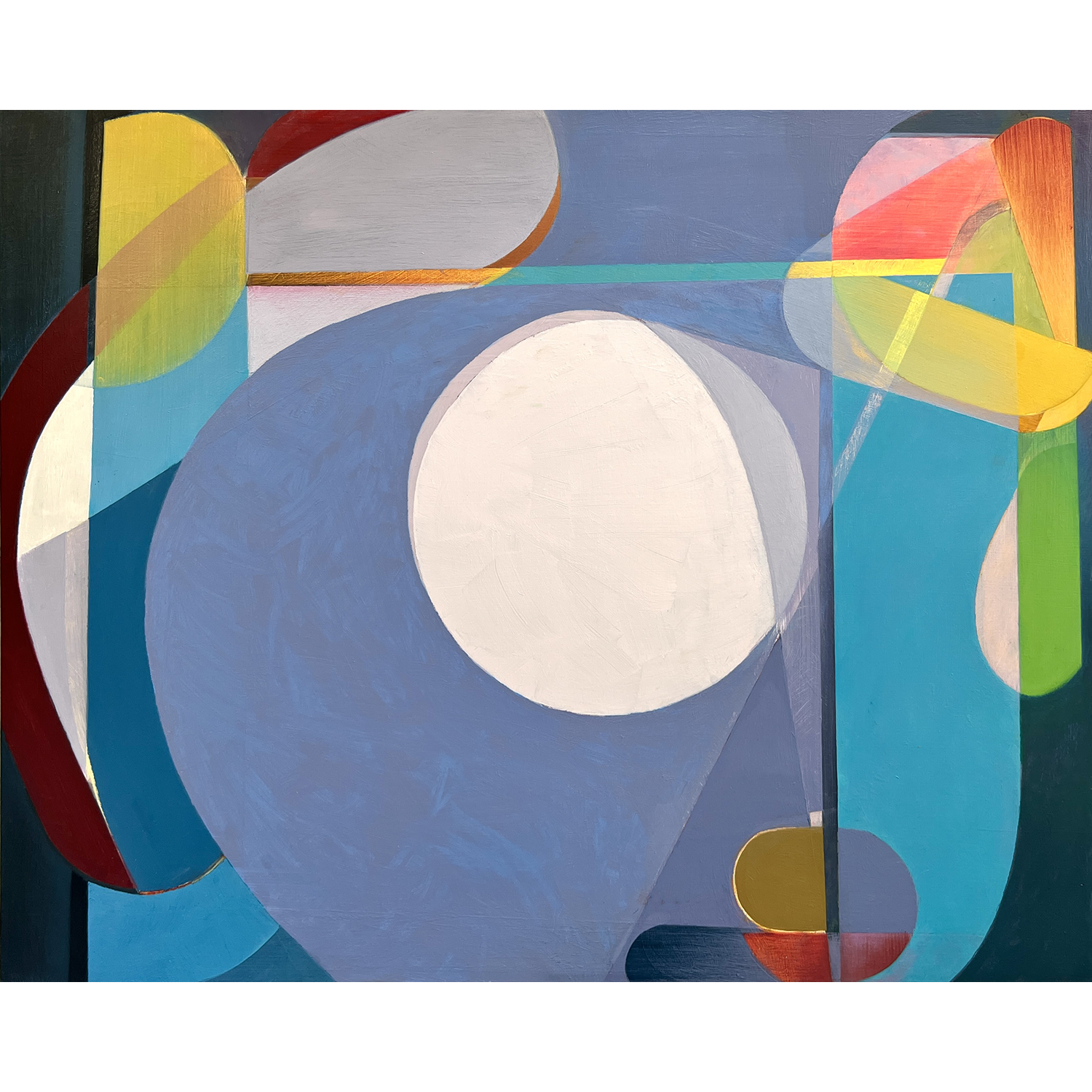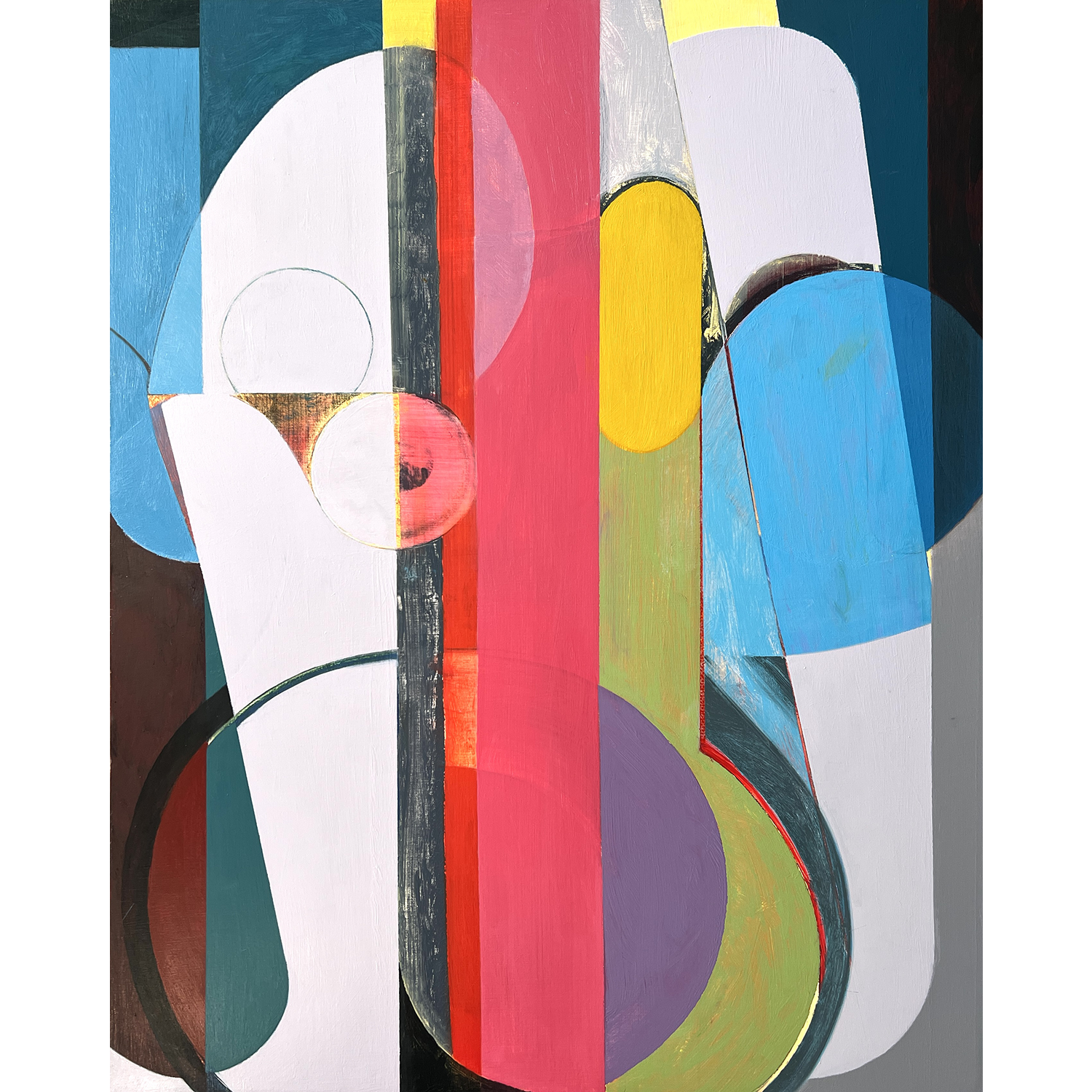
“Spinnaker”, oil on canvas, 2025, 36˝x45˝
“Search Party”, oil on canvas, 2025, 45˝x36˝
Artist Statement
When the canvas is mostly covered with color it becomes interesting to me. I may leave areas of raw canvas, but only if they activate and become part of the color composition.
From then on the shapes tend to become more definite, which allows me to create the drama, the flow, the story, the pauses, the transitions and the rhythm of the painting. I do this by putting one definite color next to another and so on until the composition begins to lead me to a new color that will stand in relation to the surrounding context—a relationship which can be one of harmony or dissonance , major or minor key, lighter or darker, loud or soft.
I started using the lozenge shape because I was seeking a non-representational shape that was definite—that had a sort of predictive pre-existence—where I could put one shape next to another, overlap, intersect and so on—but still maintain a boundary that would lead me to a specific color.
I find that the lozenge shape can be endlessly manipulated—shorter, longer, wider, narrower, even becoming a disc or circle. The circle and the arch always lead me back to Rome and Florence.
I think the passage of time in a painting, both in the doing and in the viewing, is essential. Once, when I was talking to Gary Stephan, he said that he thought that cubism was invented to, among other things, slow the viewer down. It is interesting to me to create a painting that arrests the viewer’s attention immediately. But a painting that does only that will not hold my or anyone else’s interest for long. So I end up interrogating what I have done, again and again, until the painting’s internal references become layered, multiple, contradictory even, like your oldest friend or a grandfather who now exists solely in the memories of his grand children.


